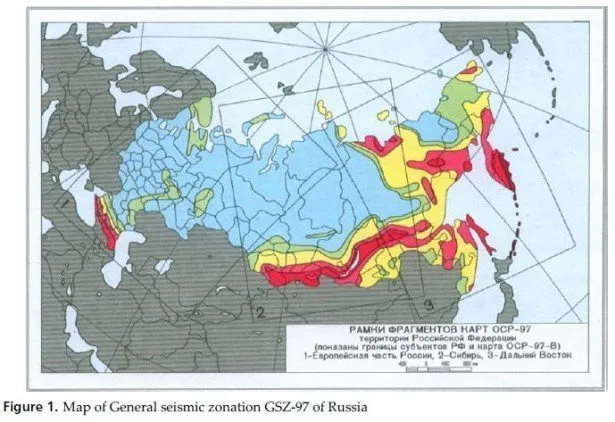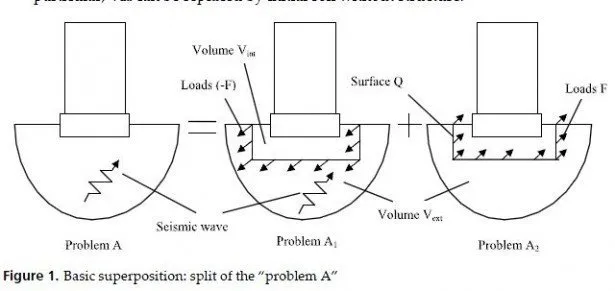Bridges in the western region of the Commonwealth of Kentucky are located near the New Madrid seismic zone, which is potentially one of the most destructive fault zones in the United States. It extends through the Mississippi River Valley and encompasses 26 counties in western Kentucky in the area of its strongest influence. Studies have shown that the probability of an earthquake with a 6.3 magnitude on the Richter scale to hit this area within the next 50 years exceeds 80%.
Passing through seven counties in western Kentucky, I-24 is considered a vital transportation link for the commonwealth of Kentucky. I-24 passes through McCracken, Livingston, Marshall, Lyon, Trigg, Caldwell, and Christian counties in western Kentucky (Figure 4). The objective of this part of the Chapter is to investigate the seismic risk of all bridge embankments on or over I-24 in western Kentucky.
In order to achieve the study objective, a means of accessing which embankments qualify as most critical is required. The methodology presented earlier in this Chapter is applied to assess the seismic vulnerability of I-24 bridge embankments. The embankment geometry, materials, type and properties of underlying soil, elevation of the natural ground line, and upper level of bedrock are estimated for each embankment. The minimum seismic slope stability capacity/demand, (C/D)min ratio, embankment displacement, and liquefaction potential of each bridge embankment are calculated. Bridge embankments along I-24 in western Kentucky are assigned one of three possible categories to represent their seismic failure risk. A final priority list of the embankments with the highest seismic risk is generated for the 127 bridges on or over I-24 in western Kentucky.
On-Site Inspection of I-24 Bridges in Western Kentucky: On-site inspection of the bridges, including photographing different structural components of each bridge, was carried out.
The on-site inspection records form an invaluable source that assists in pre-earthquake evaluation studies as well as post-earthquake inspection.
I-24 Bridge Inventory in Western Kentucky: One objective of the on-site inspection is to have an informative source of accurate and updated bridge records, which are required for most assessment studies including the current study of seismic ranking and prioritization of I-24 bridge embankments in western Kentucky. Another objective of the on-site inspection is to provide engineers and transportation officials with information delineating the current bridges conditions in order to facilitate future comparisons with post-earthquake conditions immediately after future earthquakes. Through these comparisons, significant changes can be reported and further studies can be carried out. All the bridges and embankments along I-24 in western Kentucky were visually inspected, photographed and the records were stored in a database. The on-site inspection represents a significant supplement to the asbuilt bridge plans. A comprehensive inventory of the bridges was compiled by review of the as-built bridge plans, construction and maintenance records, and on-site inspection forms. The inventory provides an essential data record, which is utilized for risk assessment of I-24 bridges and embankments in western Kentucky. A one-page sample of the I-24 bridge inventory for McCracken County is presented in Table 5. Similar inventories for Livingston, Marshall, Lyon, Trigg, Caldwell, and Christian counties are shown elsewhere [11].
Characteristics of I-24 Bridge Inventory in Western Kentucky: Eighty-one bridges are located on I-24 and 45 bridges are constructed over I-24, resulting in a total of 127 bridges either on or over the interstate in western Kentucky. Of the 127 bridges, many bridges were designed without following stringent seismic design guidelines, and may not withstand severe seismic events. Lyon and Marshall Counties are located approximately 115 Kilometers (72 miles) and 96 kilometers (60 miles) northeast of the center of the New Madrid seismic zone, respectively. McCracken County, located approximately 72 kilometers (45 miles) northeast of the center of the New Madrid seismic zone, has the largest number of bridges among all other counties with an average of two bridges per mile. The 127 bridges are categorized based on several characteristics, including:
structural type, number of spans, maximum span length, skew angle, construction materials, and bearing types. Eighty three percent of the bridges are skewed, of which, 13% have a skew angle exceeding 40 degrees. McCracken County includes the largest number of bridges (38 bridges), followed by Lyon County (27 bridges), Marshall County (21 bridges), Christian County (20 bridges), Trigg County (11 bridges), Livingston County (seven bridges), and Caldwell County (three bridges).



